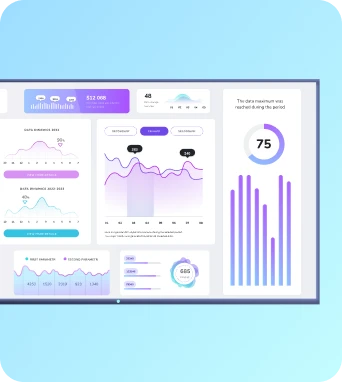Built-in media players
Built-in media players are software components or firmware embedded in commercial displays and smart TVs that decode, schedule and render digital signage content without the need for external hardware. They support common codecs, handle playlists and basic remote management, and simplify deployments for TV dashboards and workplace displays managed through platforms like Fugo.ai.
Built-in media players
How built-in media players work
Built-in media players comprise firmware or an on-device application that takes content feeds, playlists and scheduling instructions from a digital signage platform and renders them on the connected screen. At the core of the player are media decoders for video and audio codecs, rendering pipelines for images and overlays, and a scheduler that enforces timing, transitions and content priorities. Many vendors expose a web-based runtime or an application framework that accepts content via secure HTTP(S) endpoints or proprietary APIs, making it straightforward for signage software to push updates or to sync new playlists when the display goes online. Network connectivity is essential: players typically use Wi‑Fi or Ethernet to poll for content and report status back to the management console, and they cache media locally to ensure smooth playback during brief outages. Performance and compatibility vary between manufacturers. High-end displays include hardware-accelerated video decode and support for modern codecs like H.264 and HEVC, while lower-end or older built-in players may struggle with high-bitrate 4K content or advanced HTML5 signage. Built-in players often run a lightweight operating system — sometimes a customised Linux build or a restricted Android environment — and offer limited ability to install third‑party software. For teams using Fugo.ai, this means checking the compatibility list and recommended encoding settings to ensure reliable playback, and leveraging Fugo’s adaptive media handling to transcode assets when necessary.
Managing and scaling built-in players
Management of built-in players focuses on remote provisioning, monitoring, and maintenance. Cloud signage platforms provide device registries and grouping features so administrators can assign playlists, schedules and permissions at scale. With embedded players, initial provisioning often involves registering a device ID or pairing code, applying network settings and confirming a secure connection to the signage server. Good platforms include health checks for CPU usage, storage availability and playback status, enabling IT teams to detect failing displays, stalled content or degenerating performance before they affect viewers. Fugo.ai integrates device telemetry with logging and alerts to help operations teams respond quickly and to schedule automated restarts or cache-clearing tasks when necessary. Security and lifecycle management are important considerations. Built-in players receive firmware updates on a different cadence to general-purpose media players, and patching may require coordination with the display manufacturer. Organisations should verify support windows, encryption for content transport, and the ability to enforce access controls or kiosk modes. For large deployments, consider segmenting networks and using VLANs or device management platforms to isolate signage traffic. Troubleshooting common issues often involves checking codec support, reducing asset bitrates, and validating cached copies on the device. When embedded players approach their limits, migrating to a dedicated player or swapping to a display with a more capable runtime can be planned with minimal disruption if content and scheduling are managed centrally.
Choosing the right player for your signage network
Keep the learning going...
Built-in AI analytics
Built-in AI analytics refers to onboard machine-learning capabilities within a signage platform that automatically collect and analyze viewer and display performance data—such as audience size, attention time, content engagement, and playback health—delivering real-time insights, automated reports, and actionable recommendations to optimize scheduling, content, and network reliability without external tools.
Built-in color correction
Built-in colour correction is a Fugo feature that automatically aligns colour output across TV dashboards and digital signage players. It applies calibration profiles, white balance and gamma adjustments, plus per-screen offsets, to maintain consistent, accurate brand colours, reduce visual drift and simplify large-scale display management and maintenance.
Cache-busting
A technique that forces browsers and proxies to fetch the latest version of a resource (CSS, JS, images) by changing its URL or cache headers.



